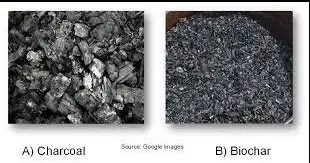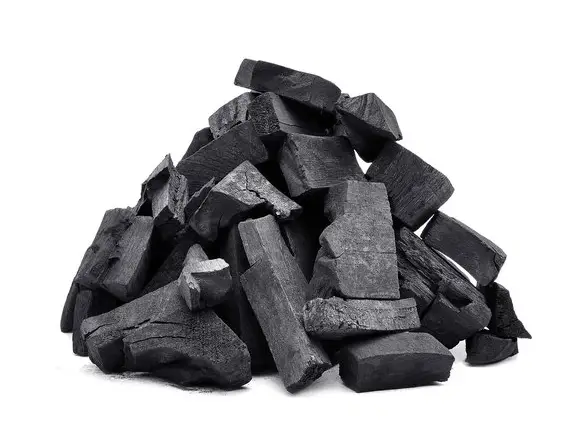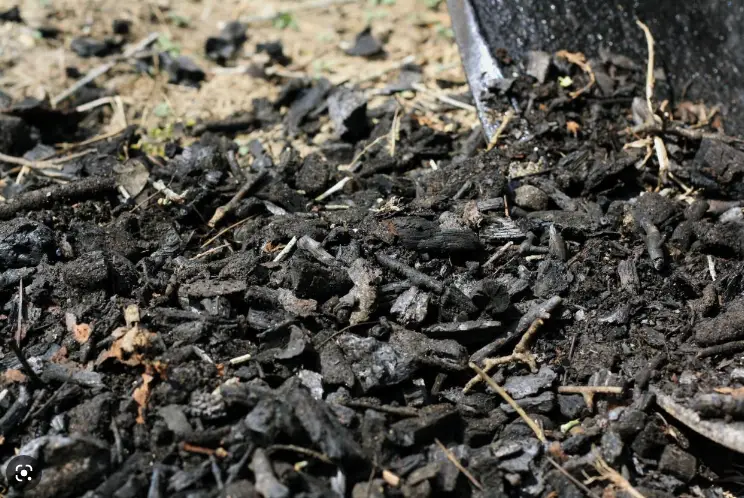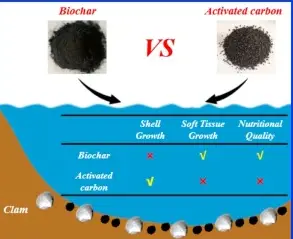Biochar and charcoal, while similar in name and appearance, serve distinct roles and are produced through different processes. Both materials are derived from organic matter but their applications and impacts on the environment vary significantly. Distinguishing between the two can provide valuable insights into their appropriate and effective uses.
Biochar is a stable, carbon-rich form of charcoal produced through the process of pyrolysis, intended for use in soil enhancement to sequester carbon and improve soil fertility. Charcoal, on the other hand, is primarily used as a fuel source, produced through carbonization and aimed at energy production. The key difference lies in their intended use—biochar for agricultural enhancement and environmental benefits, and charcoal for energy and heating.
The distinction between biochar and charcoal extends beyond their applications to include differences in production methods, environmental impacts, and physical properties. Exploring these differences sheds light on how each can be optimized for its specific use and the broader implications for sustainability and environmental health.

Definitions
What is Biochar?
Biochar is a carbon-rich material made from organic matter through the process of pyrolysis, where biomass is heated in a controlled environment with little to no oxygen. Unlike its counterparts used primarily for fuel, biochar is designed to be applied to soil as a means to improve its quality and to lock carbon into the ground, helping mitigate the impacts of carbon dioxide in the atmosphere. This substance is distinguished by its high stability and can remain in soil for thousands of years.
What is Charcoal?
Charcoal is another form of carbon-dense material, but unlike biochar, it is primarily used as a fuel source. It is produced by heating wood or other organic materials in the absence of oxygen, a process known as carbonization. Charcoal is known for its ability to burn at high temperatures and with less smoke compared to the unprocessed organic materials from which it is made. This makes it ideal for cooking and heating.
Production Processes
How Biochar is Produced
Biochar production involves several key steps, all of which contribute to its unique properties:
- Selection of Biomass: Various types of organic materials such as wood, agricultural residues, or manure can be used.
- Drying: The biomass is dried to reduce moisture content, facilitating more effective pyrolysis.
- Pyrolysis: The dry biomass is then heated to temperatures between 300°C and 600°C in an environment with limited oxygen.
- Cooling: After pyrolysis, the biochar is cooled and sometimes further processed or activated to increase its porosity and surface area.
How Charcoal is Produced
The production of charcoal, while similar to biochar, is optimized for fuel efficiency and purity:
- Harvesting Wood: Typically, hardwoods are preferred for charcoal because they yield a better quality product.
- Piling and Covering: Wood is piled into heaps, pits, or kilns and covered with earth or metal to control the air intake.
- Ignition and Carbonization: The wood is ignited, and the controlled burn converts it into charcoal through the slow pyrolysis process.
- Extinguishing: Once the conversion is complete, the air supply is cut off to stop the burn, and the charcoal is allowed to cool.
Material Sources
Sources for Biochar
Biochar can be made from a wide range of organic materials:
- Wood Chips and Sawdust: Common by-products of lumber and construction industries.
- Agricultural Residues: Stalks, shells, and husks from crop production.
- Manure: From livestock, which turns a waste product into a valuable resource.
Sources for Charcoal
Charcoal is typically produced from denser biomass to ensure a quality burn:
- Hardwood: From trees like oak, hickory, and maple which are dense and have high energy content.
- Coconut Shells: A popular source in tropical regions, known for producing high-quality charcoal.
Chemical Properties
Composition of Biochar
Biochar is predominantly carbon but also contains other elements such as hydrogen and oxygen. The specific composition depends on the feedstock and the conditions under which it was pyrolyzed. Biochar can also contain ash, which provides essential nutrients to the soil such as calcium, potassium, and magnesium.
Composition of Charcoal
Charcoal, primarily composed of carbon, also contains lesser amounts of hydrogen and oxygen and a trace amount of sulfur and other elements. Its relatively pure carbon content is what allows it to burn with high heat and little smoke.

Physical Properties
Structure of Biochar
Biochar is characterized by its high porosity and large surface area, attributes that enhance soil’s ability to retain water and nutrients. Under a microscope, biochar appears as a network of tiny pores, each capable of hosting beneficial microorganisms or trapping soil nutrients.
Structure of Charcoal
Charcoal’s structure is less porous than biochar and more robust, allowing it to maintain structural integrity under high temperatures. This structural strength makes it suitable for use as a fuel source, capable of sustaining high heat for extended periods.

Environmental Impact
Biochar’s Role in Sustainability
Biochar plays a significant role in environmental sustainability due to its ability to sequester carbon and improve soil health. Here’s how biochar contributes:
- Carbon Sequestration: Biochar is highly stable and can lock carbon in the soil for centuries, reducing the amount of CO2 released into the atmosphere.
- Soil Health: By improving soil fertility and structure, biochar reduces the need for chemical fertilizers, which are energy-intensive to produce and can be harmful to the environment.
- Water Conservation: Its porous nature helps soil retain water, decreasing the need for frequent irrigation and conserving water resources.
Charcoal and Environmental Concerns
While charcoal is an effective fuel source, its production and use come with environmental drawbacks:
- Deforestation: Charcoal production can lead to deforestation, especially when it is not managed sustainably.
- Air Pollution: Burning charcoal produces pollutants, including carbon monoxide and particulate matter, which contribute to air pollution and respiratory issues.
Uses in Agriculture
Biochar in Soil Enhancement
Biochar’s properties make it an excellent additive for soil enhancement, offering several benefits:
- Nutrient Retention: It helps soil retain nutrients that would otherwise be washed away, making them more available to plants.
- pH Adjustment: Biochar can help balance the pH of acidic soils, making them more hospitable for plant growth.
- Microbial Activity: The porous structure of biochar provides a habitat for beneficial microbes that contribute to soil health.
Differences in Agricultural Application
The use of biochar and charcoal in agriculture differs significantly:
- Biochar: Primarily used to enhance soil properties and reduce environmental footprint.
- Charcoal: Sometimes used as a soil conditioner, but its main agricultural use is as a heat source for processing agricultural products.
Energy Production
Charcoal as a Fuel Source
Charcoal is a popular fuel source due to its high energy content and ability to burn hotter and cleaner than untreated wood. Its uses include:
- Cooking: Preferred in many regions for barbecuing due to its consistent heat and minimal smoke.
- Heating: Used in residential heaters in areas where other fuel sources are scarce or expensive.
Comparing Energy Efficiency
When comparing the energy efficiency of biochar and charcoal, charcoal stands out for its fuel efficiency but lacks the environmental benefits of biochar, which, although not primarily used for energy, contributes to energy conservation through soil health improvement.
Economic Considerations
Cost of Production
The cost of producing biochar and charcoal varies based on the technology and scale of production:
- Biochar: Typically requires more sophisticated technology and higher initial investments compared to traditional charcoal.
- Charcoal: Can be produced at a lower cost, especially in traditional kilns, but may incur additional costs if produced sustainably.
Market Demand and Uses
Demand for both biochar and charcoal is influenced by their applications:
- Biochar: Increasingly in demand for organic farming and sustainable agriculture.
- Charcoal: Continues to see strong demand in the global market, particularly for cooking and heating.
Health and Safety
Handling Biochar
Handling biochar is generally safe, but precautions should be taken to avoid inhalation of dust:
- Wear Masks: When handling biochar powder, it’s advisable to wear a dust mask.
- Proper Storage: Keep biochar in a moist condition to minimize dust.
Handling Charcoal
Handling charcoal requires caution due to its potential health risks:
- Avoid Inhalation: Like biochar, avoid inhaling charcoal dust.
- Fire Safety: Ensure proper ventilation when using charcoal to prevent carbon monoxide poisoning.
Recent Advances
Innovations in Biochar
Recent innovations in biochar focus on maximizing its benefits and making its production more efficient:
- Enhanced Pyrolysis Techniques: New technologies that allow for better control of the pyrolysis process to produce higher quality biochar.
- Integrated Systems: Systems that combine biochar production with energy generation to utilize the heat released during pyrolysis.
Innovations in Charcoal Use
Innovations in charcoal use involve improving its environmental footprint and efficiency:
- Sustainable Production: Techniques that reduce the environmental impact of charcoal production, such as using renewable feedstocks or recycling waste heat.
- Improved Stoves: Stoves designed to maximize heat output from charcoal while minimizing emissions, popular in both household and commercial settings.
Frequently Asked Questions
What is biochar used for?
Biochar is primarily used in agriculture to enhance soil fertility and increase crop yields. It serves as a soil amendment, improving soil structure, nutrient retention, and microbial activity. Additionally, biochar is employed in carbon sequestration efforts to help mitigate climate change.
How is charcoal made?
Charcoal is made through the carbonization of biomass in a low oxygen environment, a process that can occur in a traditional charcoal kiln or through modern methods designed to produce fuel for heating and cooking. This process typically results in a porous, black substance that burns more cleanly and intensely than the original biomass.
Can biochar improve soil health?
Yes, biochar can significantly improve soil health by increasing soil porosity, enhancing nutrient and water retention, and reducing acidity. It also helps decrease agricultural greenhouse gas emissions by stabilizing carbon in the soil, thus playing a crucial role in soil sustainability and health.
Is charcoal environmentally friendly?
While charcoal has a reputation for being a relatively clean-burning fuel, its production and use can have negative environmental impacts, including deforestation and air pollution. However, when produced sustainably from renewable sources, charcoal can be part of a balanced energy strategy.
Conclusion
Understanding the differences between biochar and charcoal is crucial for their effective and sustainable use. While both products come from similar processes, their distinct roles and impacts on the environment highlight the need for targeted applications. Biochar’s contribution to sustainable agriculture and carbon management offers a promising avenue for addressing soil health and climate change challenges.
As the world moves towards more sustainable practices, recognizing and harnessing the unique properties and benefits of biochar and charcoal can lead to more efficient resource use and better environmental stewardship. Emphasizing the responsible production and use of these materials can significantly influence their effectiveness in their respective applications.

